
Search Wild Foods Home Garden & Nature's Restaurant Websites:
Milkweed
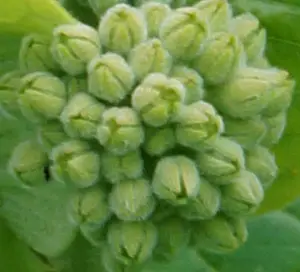
Milkweed flower ripe for picking. Picture taken in later June.
(NOTE: If you are not interested in growing Milkweed, but just finding the plant and using it, try going to the Nature's Restaurant Online site for Milkweed Flower Buds.)
Common Milkweed (Asclepias syriaca) flower buds as a cooked green is a delicacy. The season is so short, they're sticky and messy to work with, but they are so good that it really is worth it. Some people eat other parts of the plant, I don't. There are many types of Milkweed, but the Asclepias syriaca is the only one that I know of that is safe to eat. Some others, or all others might be, but I only have experience with this one. This makes an easy to grow garden vegetable, and it attracts the Monarch butterfly (it's all they like to eat). In Ontario, it is listed as a Noxious Weed, however I understand changes have been made that allow you to grow them in your garden. Once you get a section of it established, there is little care, it is a perennial that takes care of itself for the most part.
Caution: If you are allergic to latex, do not eat or touch this plant. The milky sap contains about 1-2% latex.
Is the growing of this plant compatible with Natural farming, Ecoagriculture or Eco friendly agriculture, Ecological farming, Sustainable agriculture, Agroforestry or Agro-sylviculture and Permaculture: This plant is perfect for growing using the Natural farming, no-till garden method. Once this perennial plant is started, there is no need to till the soil.
Soil: Preparing the soil is no different from most garden vegetables. Best if it is turned over, loamy and within the pH range of 5.8-7.2, which is to say slightly acidic to very slightly alkaline. To get the most from each plant, dig in some compost or composted manure.
Planting From Seed: It's funny with this one, when doing my research to confirm what I know from experience, my methods of getting this plant in my yard didn't match with most people's methods. Most instructions talk about seed stratification in a fridge in soil, soaking the seeds for 24 hours, starting in flats inside and transplanting outside when the frost is gone. I just gather the seeds when the pods start to open with them beginning to fall out, mix in a bucket of soil, spread that seed/soil mix around the prepared soil in the fall (right after I collected the seeds). Cover with about 6mm (1/4 inch) of soil, tamp down and cover with a thin layer of mulch. Next spring, there are my Milkweeds. After that, thin to give each plant a square about 30 X 30 cm (1 foot square) and harvest in June each year after.
Transplanting: I have tried transplanting smaller ones in the fall and have had success. If you do that, mulch heavily around it after moving the plant. Try to get as deep and wide as you can for the roots. Look for smaller, young ones when doing this. I don't do this unless I have one in another place I don't want it. Other than that, I just use the seed way as above.
Maintenance: Each fall spread a thin layer of composted manure or garden compost and lime on the ground around them and cover with another thin layer of mulch. You won't hurt the plants to cut them down before the seed pods open so you won't have them spreading everywhere. I find it better if you take every flower bud off each plant as they come out. That way, you get more coming in to replace them, extending the harvest. I've even had some in August, but not a big crop, just a few little ones. Still, they taste just as good, and by taking off every bud, the plant doesn't get a chance to make the seed pods, so it won't spread.
Harvesting: Some time in June, the flower buds (NOT the pods) of the Milkweed are still green and unopened. Once you see the mauve color, you are too late - they must be green. You will need a damp cloth to get the sticky white sap off your hands and everything you touch when you are picking and working with them. Cut the green, unopened flower buds into a container, and store in the fridge for up to a day or two until you are ready to cook them, but of course they are best fresh.
Using: To cook, cover them with water and bring to a boil. Simmer until tender and strain off the water. Once ready, use as you would broccoli, cauliflower or asparagus. My favorite way is with a bit of salt, lemon and olive oil. A sprinkle of freshly ground black pepper is nice. You can add them (already cooked as above) to stir-fry's. I get a kick out of watching the nervous look people have just before trying them turn to astonishment and pleasure when they first taste them. They truly are a taste delicacy.
Description:
- USDA Plant Hardiness Zone: 3-9 (More information on hardiness zones).
- Soil pH: 5.8-7.2
- Plant Size: Up to 2.5 meters (8 feet) tall
- Duration: Roots are Perennial
- Leaf Shape: Ovate to Lanceolate
- Leaf Phyllotaxis (Arrangement) on branch: Decussate (Alternating Opposites. That is, they come in Opposite pairs that Alternate on the stem - if looking at the plant from above, you will have one pair at three and nine o'clock, then the next pair at twelve and six o'clock.)
- Leaf Size: Up to 25 cm (10 inches) long and 12 cm (4 3/4 inches) wide, but usually much smaller
- Leaf Margin: Entire (smooth edged), and very often wavy
- Leaf Notes: leaf central vein is reddish
- Flowers: Spherical clusters of mauve to purple little 5 petalled flowers
- Fruit: Pods with oval, flat, brown seeds with flat wing like structure around it attached to a pappus that acts like a parachute to let the fruit be carried by the wind.
- Habitat: Full sun in a variety of habitats. Fields, waste areas, gardens as a weed, in with crops, along fence lines.
Web Resources:
- Recipe search on the web here (Google search) and here (Bing search).
- Pictures on the web here (Google images) and here (Bing images).
- Interactive USDA distribution map and plant profile here.
- The Biota of North America Program (BONAP) distribution map here. BONAP map color key here.
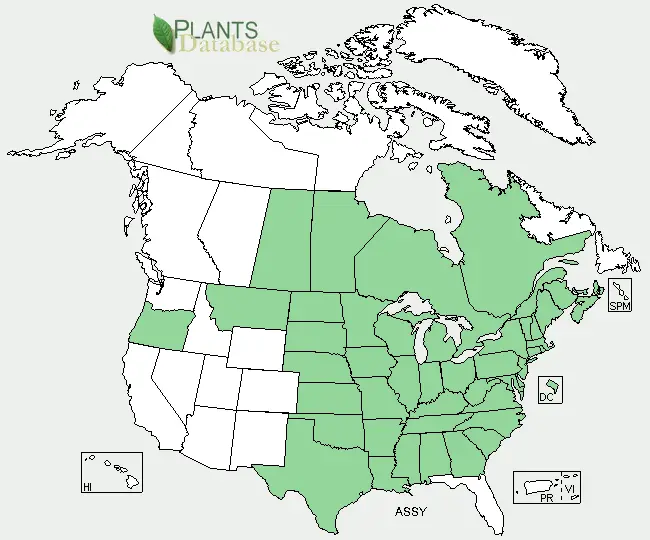
Common Milkweed (Asclepias syriaca) range. Distribution map courtesy of U. S. Department of Agriculture (USDA Natural Resources Service) and used in accordance with their policies.
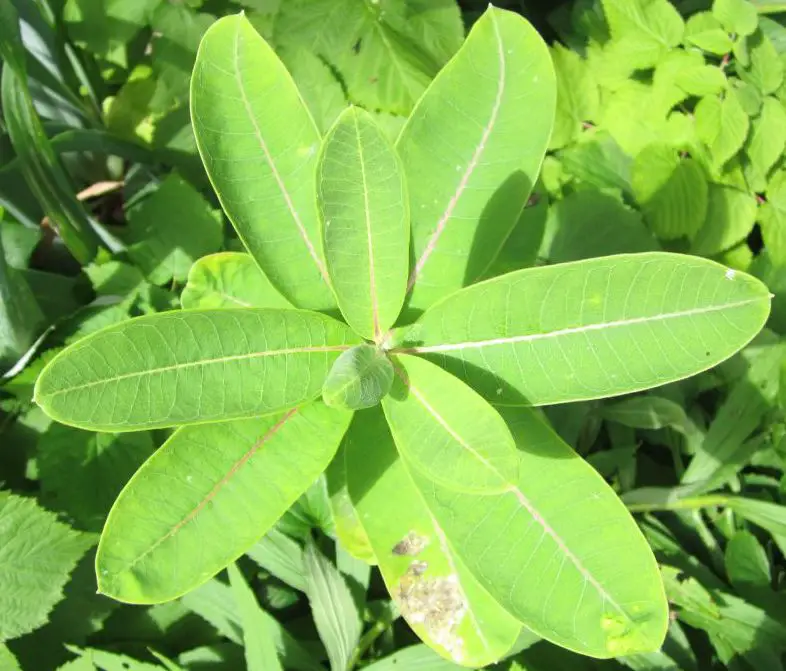
Young Milkweed plant before flowering.
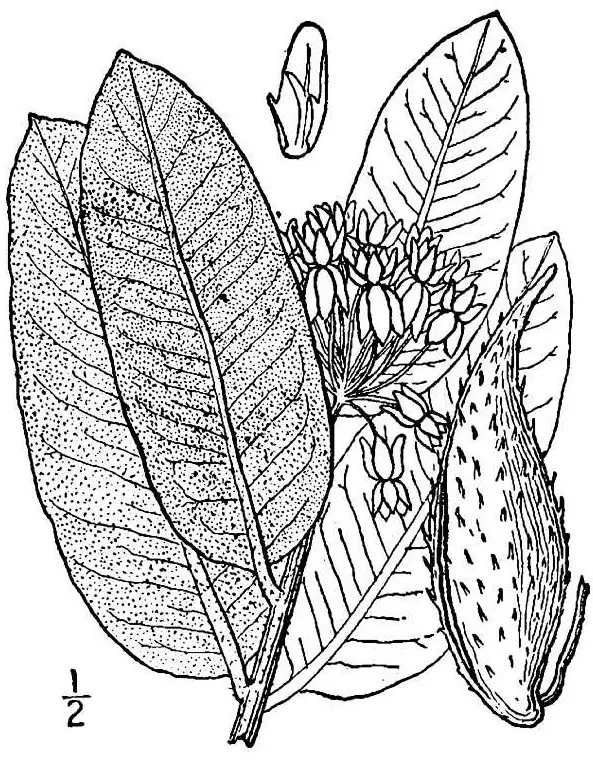
Common Milkweed drawing. (USDA-NRCS PLANTS Database / Britton, N.L., and A. Brown. 1913. An illustrated flora of the northern United States, Canada and the British Possessions. 3 vols. Charles Scribner's Sons, New York. Vol. 3: 30.)
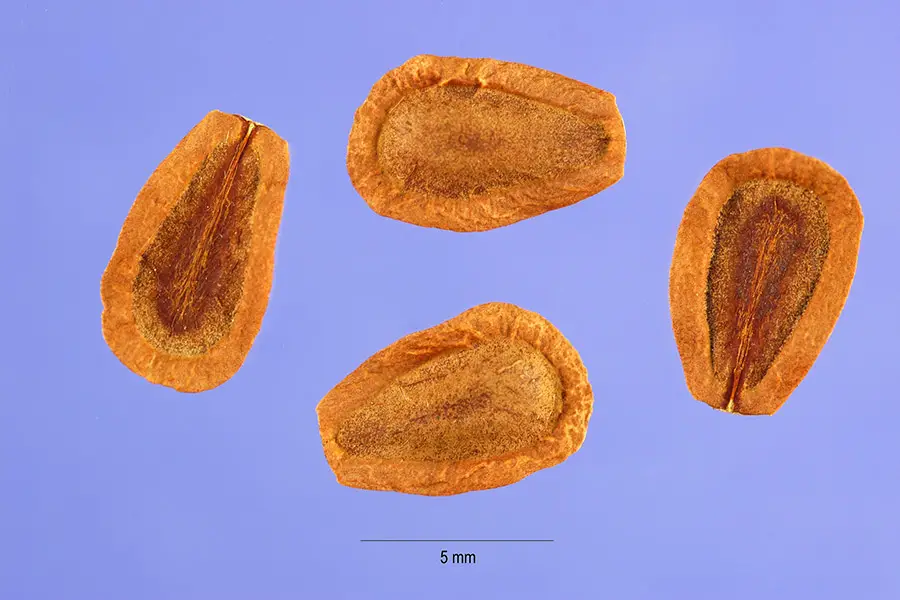
Common Milkweed seeds. (Steve Hurst, hosted by the USDA-NRCS PLANTS Database)
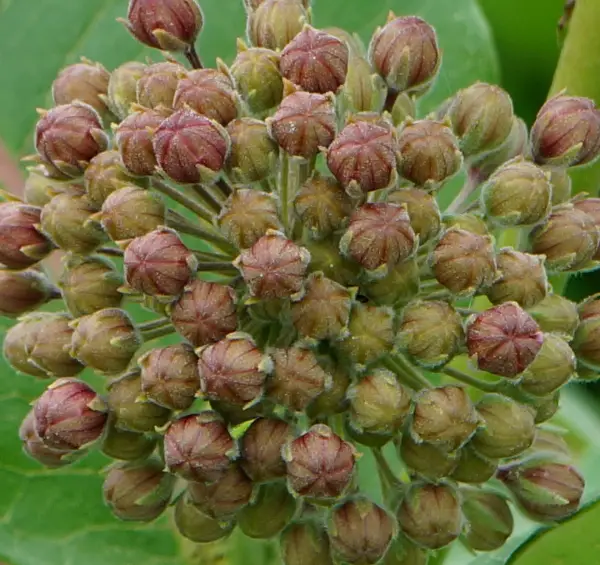
Milkweed flower turning reddish. This is too late for picking. It must be green like the picture at the top of the page.
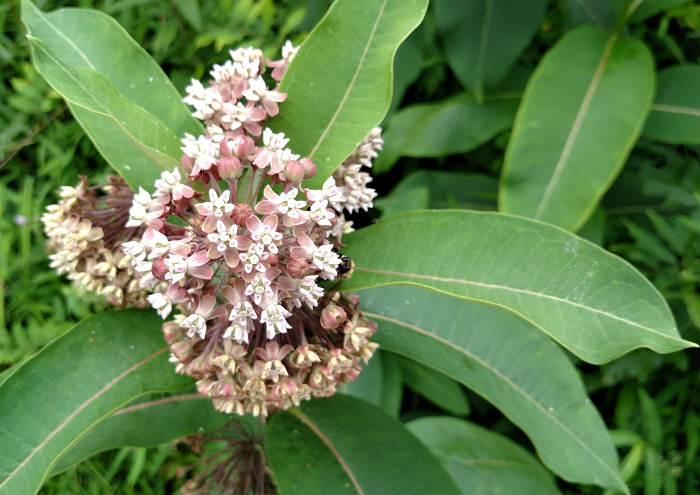
Milkweed flower open. This is what the buds turn into.
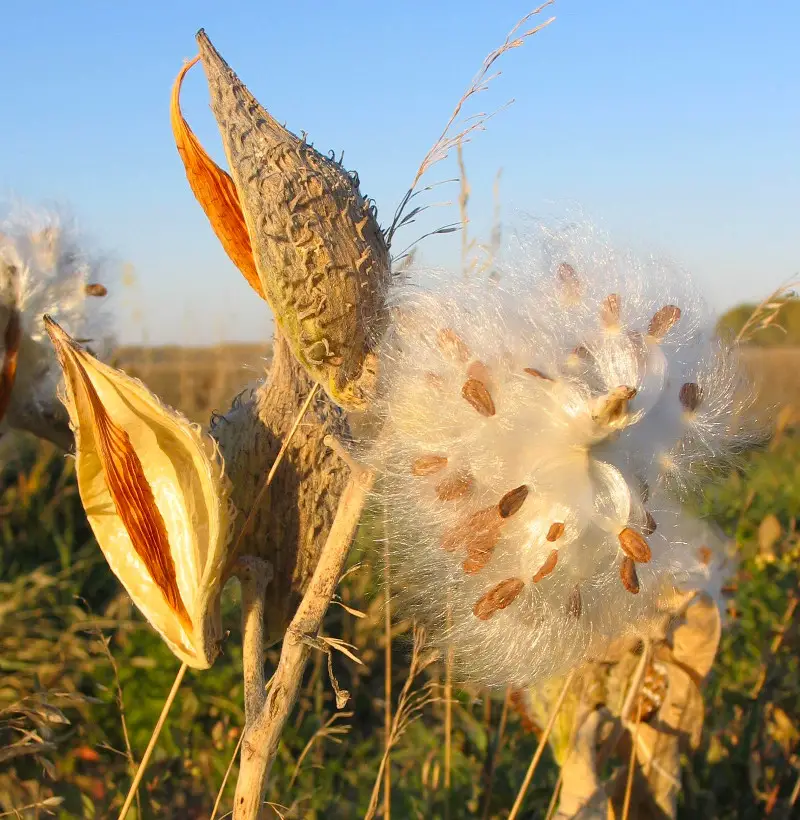
Milkweed in seeding stage. This is what they look like when you gather the seeds for planting in your garden.
Search Wild Foods Home Garden & Nature's Restaurant Websites:
Share:
Why does this site have ads?
Originally the content in this site was a book that was sold through Amazon worldwide. However, I wanted the information to available to everyone free of charge, so I made this website. The ads on the site help cover the cost of maintaining the site and keeping it available.
Google + profile
